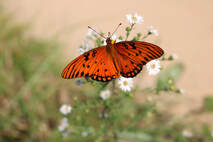
The Chattanooga Audubon Society continues to offer their nature photography contest. Details on how to submit work appear on their website. Entry fee is $10 for three digital photos. Twelve winning photos will appear on their calendar
The Chattanooga Writer’s Guild continues to offer their Spring Contest for area writers. Contestants may contribute in six categories, three of which are specific to Chattanooga. Look to their web site for guidelines, deadlines, and prize information. contest.html
Barking Legs Theatre continues to offer online versions of the Wednesday Jazz Online program and The Floor is Yours each Friday. Poets, Musicians, Dancers, and Performance Artists are encouraged to submit videos of their work, with virtual tip jar information for inclusion in The Floor is Yours. Past performances are available on their Facebook Page.
The Chattanooga Pulse continues to publish their online edition, released each Wednesday. Check out the Local News page.
The Cornell Laboratory of Ornithology offers online bird identification classes through their Bird Academy. Courses range from beginning to advanced. They also have several live Bird Cams for a virtual look at the world of birds.
Winning Writers has announced the North Street Book Prize, for recently self-published books. First place prizes in several categories are $1,000 each. They will also award one Grand Prize of $5,000.
Boulevard, a literary magazine has released a podcast with excerpts of their spring issue. The print edition includes winning poems and essays from their recent contests. Details on submitting work for review and on rate of pay are available.
Send information on your events to Ray Zimmerman. Ray also edits the Chattanooga Chat, a newsletter that is “for the birds.”
Review
The art of Haiku by Stephen Addiss
If you enjoy short poems or delightful visual art, this book is for you. It was my first introduction to haiga, visual art specifically created to accompany haiku.
Addiss illustrates his work liberally with exemplary poems and samples of visual works created to accompany them, stressing the point that they were created to be enjoyed together.
He traces the history of short form poetry in Japanese society, beginning with Tanka, a five-line form poem popular early in the previous millennium and continued into the present day. He contrasts it with the Chinese style poetry which was popular in the imperial court.
He follows this with biographies of the three acknowledged masters of Haiku and Haibun: Basho (17th century), Buson (18h century) and Issa (19th century). The chapters on these three include illustrations of their artwork, as do the sections on Zen poets and early 20th century haiku poets.
He ends the work at World War II, stating that Haiku has since become a world-wide phenomenon, and a description of it in recent years would fill another book. I found it a delightful read but would like to see some contemporary examples of haiga.
A Poem
The Paragon Press originally published this poem in their online journal Anapest.
A Chattanooga Lookout
Ray Zimmerman
The Lookouts got their first shot at fame,
A New York Yankees Exhibition game.
They signed Jackie Mitchell, a publicity stunt,
but she pitched like a pro, not some sorry runt.
The starter gave up a hit and a double.
They sent Jackie in to heal this trouble.
She struck out Babe Ruth, third up to bat.
She stuck out Lou Gehrig, imagine that.
Lazzeri she walked, put a third man on base.
The manager pulled her just to save face.
The commissioner said that she had to go.
Should women play baseball? He just said no.
But Jackie achieved House of David fame.
That barnstorming team won many a game.
The men all wore beards and long hair to boot.
She donned a fake beard, thought it was a hoot.
She wasn’t afraid of a publicity stunt,
but she pitched like a pro, not some sorry runt.

 RSS Feed
RSS Feed